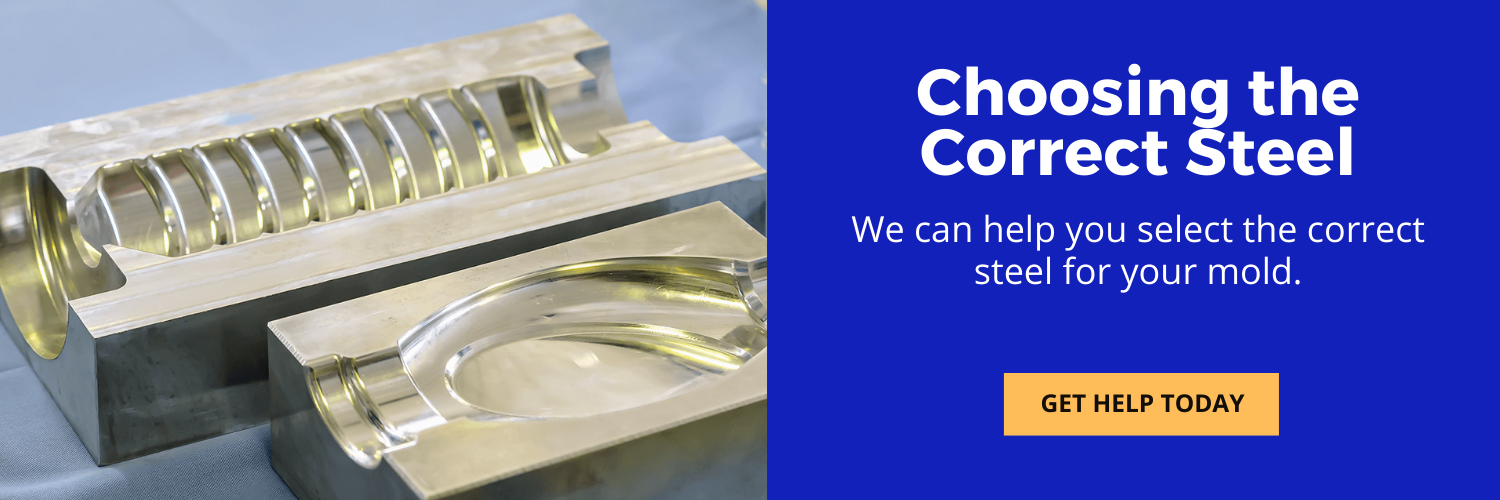You might think your decision making is done after you select the right plastic for your injection mold job. You also want to make sure you have the right steel for it. Choosing the wrong one could result in premature wear, or a cracked core and cavity. In fact, the whole molding process - including cycle times, volume, cost, and maintenance expectations - has to mesh with the steel used.
Steel Options for Injection Molds
So what steel is good to use for making plastic injection molds? There are a few options:
P-20
P-20 is a low-alloy steel that’s the most popular for molds. It’s commonly used for mold parts that do not require high surface hardness or high-temperature operation. P-20 is tough at moderate strength levels and has more ease to reach a high polish surface finish.. Usually it doesn’t require any additional heat treating and is often sold in a pre-hardened condition. It’s best with non-abrasive plastics. Also note that when it isn’t coated or surface-hardened, it won’t stand up to high-volume production.
S-7
S-7 is a high strength steel that provides excellent impact resistance. It can withstand high heat without distorting. It’s good for moderate hot work as well as cold work tooling, and has added size stability when it’s air hardened. For plastic injecting, S-7 is available as a remelted, mold-quality product. This means that - because of the remelting process which reduces the amount of non-metallic inclusions - it has enhanced polishability for critical cavity, insert, and other tooling surfaces.
H-13
H-13 is an easy to machine steel with high hardness, strength, and toughness. It’s a high-impact steel that retains its hardness at high temperatures and its strength protects against cleavage cracking. It’s very versatile in hot or cold work environments. H-13 can take a high polish, making it perfect for lens or dinnerware molds. One thing to watch for is that H-13’s tooling surfaces can corrode due to moisture, humidity, or chemically enhanced plastics.
420 stainless
420 stainless steel is especially good for custom injection molding. It provides a superb polished surface as well as good resistance to corrosion. It’s perfect for mold cavities that require photo etching, texturizing, or lens-quality polished finishes.
Aluminum
Aluminum is often used for rapid prototyping. It is more cost effective in the short term than steel, has faster heating and cooling times, and does not need to be sent out for heat-treating or stress relieving. Aluminum has a thermal heat transfer that’s four to five times better than other steels. With better thermal conductivity, the position and number of water lines in production is less critical, allowing for the placement of additional ejector pins where needed. It also has good machining and polishing characteristics.
Alloys
Slightly more expensive than aluminum, metal alloys are more robust and don’t crack or warp as easily. There’s a large range of alloys available with different hardness. Keep in mind that the harder an alloy is, its thermal conductivity decreases.
That’s a lot to choose from. If it feels overwhelming, contact us and we can guide you through the selection process.


